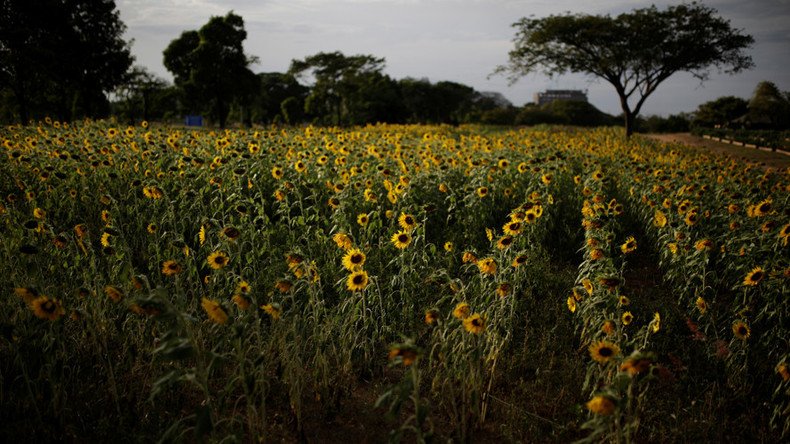Mimicking polio virus in plants holds key to game-changing vaccine – study

A team of scientists are using plants to develop a new polio vaccine that they hope could finally lead to the eradication of the disease.
Scientists devised a method growing virus-like particles (VLPs) in plants which are then extracted to create the vaccine.
VLPs are non-pathogenic mimics of the virus. They look like the real thing but are not infectious as they were engineered not to contain the nucleic acid needed for the virus to reproduce.
This is a crucial point, because VLPs mimic the virus and, once administered to a patient, the person’s immune system will kick in and fight the non-infectious replica, developing an immunity without a danger that it will infect the person.
Cows can produce powerful antibodies to fight #HIV - research https://t.co/Y4SWeRdXDvpic.twitter.com/1oi2D3WohG
— RT (@RT_com) July 22, 2017
“This is an incredible collaboration involving plant science, animal virology and structural biology. The question for us now is how to scale it up – we don’t want to stop at a lab technique,” study author Professor George Lomonossoff said in a press release.
“The beauty of this system of growing non-pathogenic virus mimics in plants, is that it boosts our ability to scale-up the production of vaccine candidates to combat emerging threats to human health,” he added.
Polio, a highly infectious disease which invades the nervous system causing paralysis and sometimes death, has all but been eradicated from the globe. Infection rates have been slashed by 99 percent since 1988, due to the Global Polio Eradication Initiative led by the WHO, which reduced numbers from an estimated 350,000 at the time to just 37 in 2016.
However, the virus was feared by millions up until the first vaccines emerged in the middle of the 20th century.
It is now hoped that, further to eradicating polio, this breakthrough could be used to target other viruses threatening humanity.
Bringing #Zika back: Florida's 1st sexual transmission of virus in 2017 https://t.co/JJyuwhKxDE
— RT America (@RT_America) August 2, 2017
The research was published Tuesday in the journal Nature Communications.












